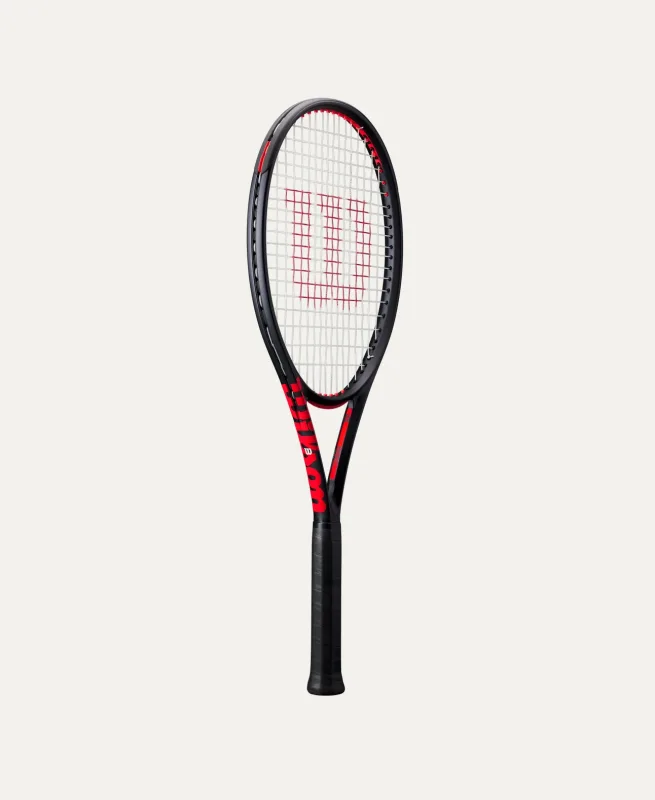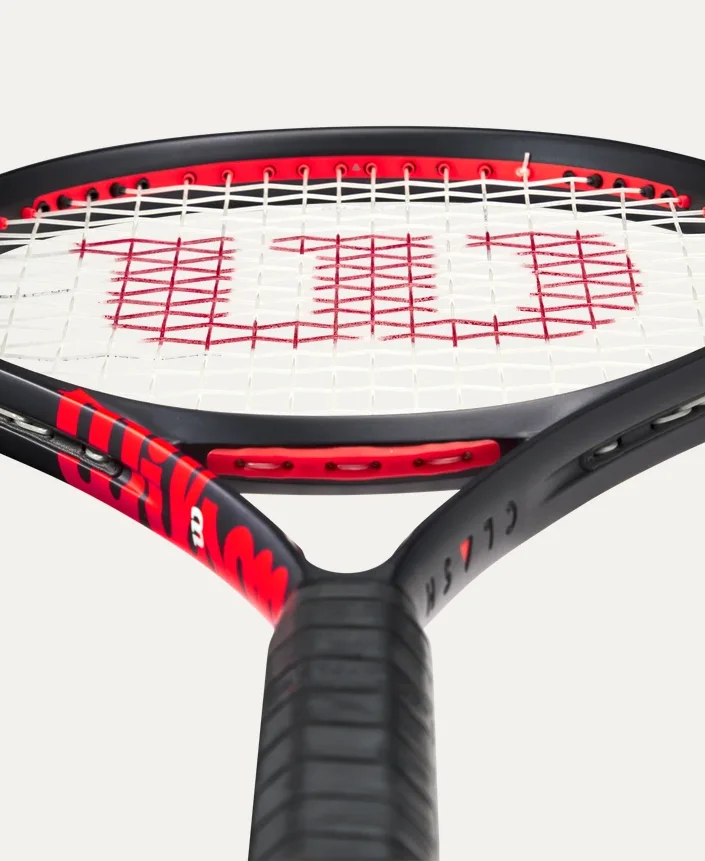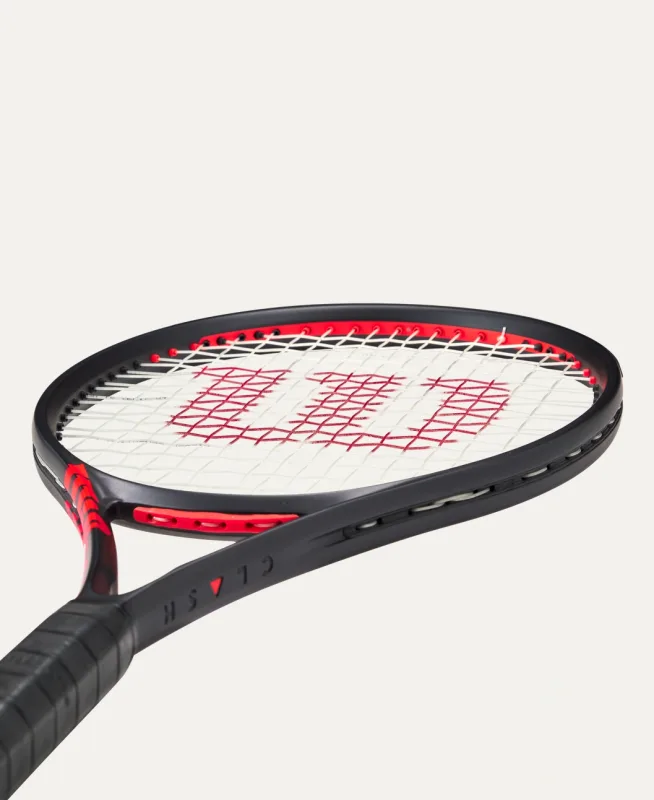By a Lifelong Tennis Player Who Finally Found “The One”

As a passionate tennis player who’s logged thousands of hours on the court, I’ve always been chasing that perfect blend of feel, control, and comfort. Over the years, I’ve flirted with rackets from Babolat, Head, Yonex, you name it. But the Wilson Clash 100L is the first racket that truly felt like an extension of my arm. It doesn’t just play well, it invites you to play more.
Why the Clash Line Is Revolutionary for Tennis

Wilson introduced the Clash series to disrupt the decades-long tradeoff between flexibility and stability. Traditionally, if you wanted control and feel, you had to sacrifice power and accept a stiffer frame—often at the cost of your arm.
With the Clash series, especially the 100L, Wilson employs FreeFlex and StableSmart technologies. These are more than marketing terms:
- FreeFlex: A proprietary carbon mapping design that allows the frame to bend in multiple directions—enhancing dwell time, pocketing, and overall feel.
- StableSmart: A unique frame geometry that maintains torsional stability, preventing the racket from feeling like a noodle despite its flex.
The result? A lightweight frame that bends with your stroke but still delivers confident, controlled responses.
Specs Breakdown
| Spec | Value |
|---|---|
| Head Size | 100 sq in |
| Weight (Unstrung) | 280g / 9.9oz |
| Balance | 31.5 cm / 9 pts HL |
| String Pattern | 16×19 |
| Beam Width | 24.5 mm |
| RA (Flex Rating) | ~55 (very low for a modern racket) |
| Swingweight | ~306 |
This spec sheet doesn’t scream power or tour-level beast—but it hides a lot of magic under the hood.
On-Court Experience: Honest Feedback by Shot Type

Baseline Play (9/10)
This is where the Clash 100L becomes addictive. I love hitting with topspin, and the open 16×19 string pattern combined with the light weight makes it so easy to whip through the ball. It gives you a sense of confidence on big forehands—you can swing freely knowing the ball won’t sail long. The spin potential is above average, especially for its weight class.
Interestingly, even mishits don’t rattle your hand the way they might with stiffer rackets. That’s where the flexible frame really earns its keep—it absorbs vibration naturally, leading to cleaner, more confident groundstrokes.
Personal Take: On days when my timing is off, this racket forgives me. It doesn’t punish me like my old Babolat Pure Strike used to.
Volleys (8/10)
Volleys are where the lightweight build pays off. It’s super quick up at net. I can react to fast exchanges with ease, especially in doubles. The only drawback is stability—against heavy hitters, it lacks the mass to fully absorb incoming pace unless your technique is spot-on. Still, the soft flex makes touch volleys feel like a dream.
Serves (7.5/10)
Serving with the Clash 100L is all about spin and placement. If you rely on pure power, you’ll feel a slight drop-off. However, my kick and slice serves came alive. The racket rewards smooth, rhythmic motions rather than brute force.
Personal Tip: Add a bit of lead tape at 3 and 9 o’clock if you want more plow-through without changing the core feel.
Returns (8.5/10)
Returning serve with the Clash 100L is surprisingly good, especially on second serves. The maneuverability means you can redirect with ease. Again, against big first serves, I’d love a bit more weight—but that’s where the Clash 100 (295g) or Clash Pro 98 come in.
Comfort & Arm-Friendliness (10/10)
This deserves its own section. I’ve had mild elbow pain on and off for years—especially after long sessions or heavy rackets with poly strings. Since switching to the Clash 100L (strung with a hybrid setup: natural gut mains, poly crosses), I haven’t felt any arm fatigue. None. It’s the most comfortable racket I’ve ever played with.
Who Is This Racket For?
- Intermediate to advanced players who want to swing freely without overhitting
- Older players or those recovering from injury
- Aggressive baseliners who prioritize topspin and depth over raw power
- Junior players transitioning into full-sized adult frames
- Doubles specialists looking for maneuverability and touch at the net
If you’re a 5.0+ player or love ultra-heavy rackets with massive plow-through, you might find the 100L too light. But don’t overlook it—many advanced players have customized it with weight to create a more personalized setup.
Do Any Pros Use It?
While no top 10 players use the Clash 100L on tour, it’s becoming more visible among doubles players and pros focused on comfort and feel.
- Nicole Melichar-Martinez, a top WTA doubles player, has endorsed the Clash line.
- Many college and junior players are now choosing it as a base frame to customize for their style.
It’s also worth noting: the pros often play with paint jobs, so even when they appear to use certain frames, they may be playing with customized layups. Still, the Clash line has a loyal following at the club and advanced amateur level for good reason.
Final Verdict
The Wilson Clash 100L is the rare kind of racket that reinvigorates your game. It offers control without harshness, flexibility without mushiness, and spin potential without effort. It may not be a one-size-fits-all, but if you’re the type of player who values feel, comfort, and fluid movement—it might just be the racket you’ve been looking for.
My Rating: 9.2/10
Pros:
- Supreme comfort
- Easy to swing and control
- Excellent topspin potential
- Arm-friendly even with poly strings
Cons:
- Less power than stiffer frames
- Stability suffers slightly on heavy returns
- Advanced players may crave more mass
Would I Buy It Again?
In a heartbeat. In fact, I already have a backup—because once you find a racket that feels this good, you don’t let it go.


